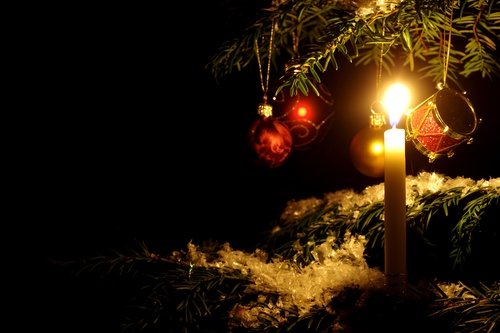The holidays sure can bring a lot of joy and cheer to locals as festive decorations shine bright on residents’ homes - both inside and out. With Christmas less than a week away, families across Long Island have been visiting their local Christmas Tree farms, and purchasing pines to deck out for the holiday. As we celebrate the holiday and enjoy our trees, it is important to remember some safety tips that will keep you and your loved ones safe this season. There are certain risks that come with the fun of holiday decorating that could potentially drain out all that joy and cheer, the biggest one of course being the potential of a house fire.
Although fires started by Christmas tree are not common, the risk increases during this time of year and they tend to be very serious. Between 2007 to 2011, fire departments responded to an average of 230 home fires that started with Christmas trees per year. An average of six deaths, 22 injuries and $18.3 million in property damage resulted from these fires.
As you dust off those boxes of ornaments, not only should you carefully consider where to place those precious ornaments but also carefully consider whether you have a live tree or an artificial tree and where you plan on showcasing your Christmas tree while not taking away all the sparkling shine from it.
The risk of fire from natural, live trees is much higher compared to artificial trees. However, both types of trees are prone to be set on fire. With an artificial tree, double check that it’s labeled, certified, or identified by the manufacturer as fire retardant. Although fresh trees can be sprayed with a fire retardant, it can be a hassle.
When first picking out a live tree, it is important to choose one that has fresh, green needles that do not fall off when touched or shaken. If a significant amount of needles fall, that is a sign that tree is dry so you’re best bet would be to choose another one. In addition, choosing the right size for your family and home is an important factor to consider as well. Smaller trees tend to work better with smaller homes.
Christmas lights are available for both indoors and outdoors. Be sure to read the packaging label to find out which lights you may or may not use on your tree. Although some lights are usable for both inside and outside, not all are outdoor lights are meant for indoor use and vice versa.
Here are some more safety tips from the National Fire Protection Association to prevent your beloved Christmas tree from catching fire:
- Place the tree at least three feet away from any heat source such as fireplaces, radiators, candles, etc.
- Water the tree daily - without a sufficient amount of water, the tree will dry out faster.
- Make sure the tree doesn’t block any exits like windows, stairs, and doors.
- One of every three home Christmas tree fires are caused by electrical problems. Be sure to check the wiring of the rope lighting. Replace any string of lights that may have a broken cord or loose bulb connection.
- Be sure to turn off all the lights on the tree when unsupervised if the family leaves the home for the evening or when going to bed. Do not leave the tree lights on overnight.
As the holiday season comes to an end, be sure to get rid of your tree as soon as it starts dropping its needles. The dead needles can be hazardous and can easily catch fire. The NFPA recommends the tree be discarded after four weeks if the tree was well maintained and treated.
Christmas trees aren’t the only hazard families should be worried about. As the weather becomes colder and locals cozy up in their homes especially by the fireplace, it is important to also remember to be safe when burning wood to help heat your home. Be sure to check out some fireplace safety tips we’ve put together for you.
Be sure to check out this great infographic packed with Christmas Tree Safety Stats & Tips!
[Source: NFPA]
Video via FEMA's official YouTube Page.










